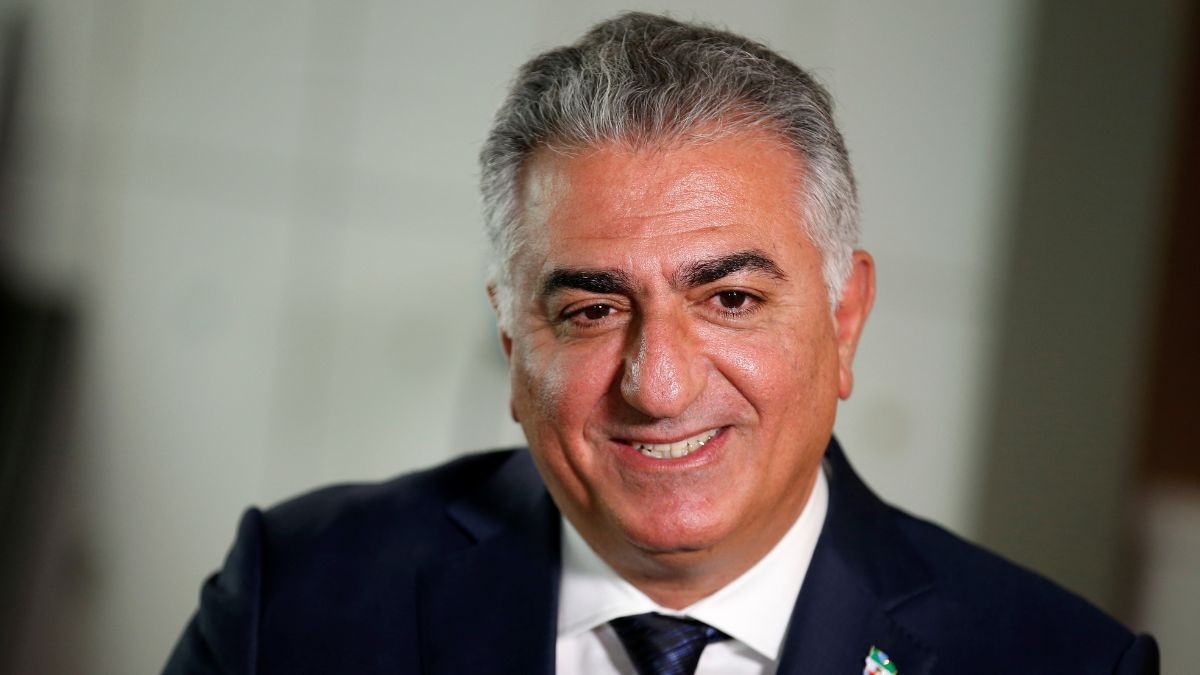Amid growing tensions with Israel and rising unrest in Iran, exiled Iranian crown prince Reza Pahlavi has called for a change of leadership in Tehran.
In a post on X, Pahlavi claimed that Iran’s Supreme Leader , Ayatollah Ali Khamenei, had “gone into hiding underground” and no longer had control over the country. He called the situation “irreversible”.
He also referred to Khamenei as a “frightened rat who has gone into hiding”.
Read Israel Iran conflict live updates here.
It is worth noting that freedom of speech in Iran is tightly controlled, and there have been no large-scale public calls within the country to remove the regime following Israel’s strikes.
But who is Reza Pahlavi? And what do his latest remarks suggest?
Let’s take a look:
Who is exiled prince Reza Pahlavi?
Reza Pahlavi was once the crown prince of Iran’s pro-Western monarchy, which collapsed in 1979 after a mass revolution led to the rise of the clerical leadership that founded the Islamic Republic.
He is the son of Iran’s last Shah, Mohammad Reza Pahlavi.
ALSO READ | What is the Fattah-1 missile that Iran has launched at Israel?
At 17, Reza left for military school in the United States shortly before his father, suffering from cancer, stepped down on January 16, 1979.
The Shah’s exit created a power vacuum, which was quickly filled by Ruhollah Khomeini. This was the beginning of Iran’s shift into a conservative theocracy, largely cut off from the West.
Impact Shorts
More ShortsSince then, Reza Pahlavi has remained focused on a single mission: bringing about a peaceful revolution to replace the current regime with a secular democracy led by the Iranian people.
His political thinking has been shaped by the nonviolent principles of Mahatma Gandhi and Martin Luther King Jr.
While he holds no official role in Iran, he has built a symbolic presence among parts of the Iranian diaspora and some Iranians hoping for reform.
Pahlavi is a vocal supporter of a democratic, secular Iran and has recently stepped up his efforts to gain international support for Iranian protestors and a nonviolent end to the current regime.
His supporters include secularists, constitutional monarchists, and liberal democrats, who see him as the rightful heir to the throne. They also regard him as a determined figure who, last year, represented Iranian democratic hopes in meetings at the European Parliament in Strasbourg, the Munich Security Conference, and in Israel.
Even as Iran and Israel remain bitter rivals, Pahlavi has proposed a vision: a “Cyrus Accords” between Israel and a future, post-Ayatollah Iran.
“Pahlavi travels the world meeting with heads of state, legislators, policy-makers, interest groups and student groups speaking about the plight of Iranians under the Islamic regime in Iran… He calls for regime change through non-violent civil disobedience, and for a free and open referendum on a new government of Iran,” his website reads.
Who are the Pahlavis?
The Pahlavis were Iran’s last royal family, rising to power in 1925 when Reza Shah Pahlavi, a former military officer, removed the Qajar dynasty.
He launched huge modernisation plans, including new roads, schools, and a centralised military. However, his authoritarian rule and ties with Nazi Germany during World War II led Allied powers to force him out in 1941.
His son, Mohammad Reza Shah Pahlavi, took the throne and ruled from 1941 until 1979.
By the late 1970s, anger had built up over political repression, unequal wealth, and the Shah’s close links with the West, especially the United States. These frustrations led to mass protests and unrest.
In 1979, after months of demonstrations, the Shah left the country. Ayatollah Khomeini returned from exile soon after and declared the formation of the Islamic Republic.
‘Break from the regime’: What Reza Pahlavi said amid West Asia tensions
On Friday, Reza Pahlavi urged Iran’s security forces to walk away from the clerical regime, stating that the Islamic Republic could soon fall following Israeli military action.
He accused Supreme Leader Ayatollah Ali Khamenei of “dragging Iran into a war” with Israel and said the regime was “weak and divided.”
“It could fall. As I have told my compatriots: Iran is yours and yours to reclaim. I am with you. Stay strong and we will win,” he said in a statement.
My Fellow Countrymen,
— Reza Pahlavi (@PahlaviReza) June 17, 2025
The Islamic Republic has reached its end and is in the process of collapsing. Khamenei, like a frightened rat, has gone into hiding underground and has lost control of the situation. What has begun is irreversible. The future is bright, and together, we… https://t.co/XEyL5IM05t
“I have told the military, police, and security forces: break from the regime. Honour the oath of any honourable serviceman. Join the people.”
ALSO READ | Who was Ali Shadmani? Who are Iran's other top military officials killed by Israel?
Now living in exile near Washington, Pahlavi says he is not pushing for a return of the monarchy, but wants to use his name to support the push for a secular, democratic Iran.
Israel, which views the Islamic Republic as a major threat, had once been an ally of Iran under the Shah. Reza Pahlavi has maintained warm ties with Israel and visited the country two years ago.
He has often described the Islamic Republic as fragile, including during the 2022 protests that followed the death of Mahsa Amini, who was arrested by Iran’s morality police for breaching ‘modest’ dress rules for women.
With inputs from agencies


)

)
)
)
)
)
)
)
)



